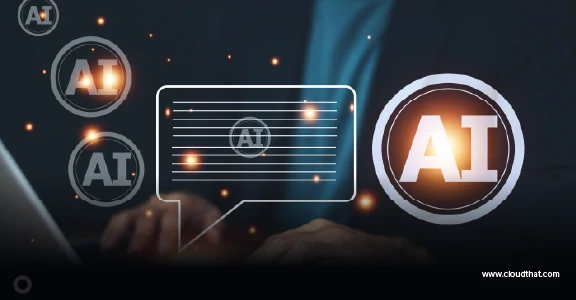|
Voiced by Amazon Polly |
Overview
In the rapidly evolving landscape of data and AI, transforming insights into actionable, user-friendly applications is paramount. Traditionally, this “last mile” has been complex, requiring diverse infrastructure, security, and deployment skills. ‘Databricks Apps’, a groundbreaking new feature on the Databricks platform, revolutionizes how organizations build and share secure data and AI applications.
This blog post will explore Databricks Apps, its core capabilities, generation process, advantages, and common questions.
Pioneers in Cloud Consulting & Migration Services
- Reduced infrastructural costs
- Accelerated application deployment
Introduction
Databricks Apps is a significant advancement on the Databricks Data Intelligence Platform, designed to simplify and accelerate the development and deployment of secure data and AI applications. It enables developers to build interactive, user-facing tools directly within the Databricks environment, eliminating the need for separate infrastructure or complex security configurations.
Key innovations include its serverless architecture and deep integration with Unity Catalog, which is Databricks’ unified governance solution. This ensures applications inherit the same granular access controls, auditing, and lineage established for underlying data assets, making them exceptionally secure and compliant by design.
How to Generate Databricks Apps?
Generating and deploying a Databricks App involves a streamlined process that integrates with your existing development workflows, favoring local development and version control.
Here’s a conceptual breakdown of how to generate a Databricks App:
Prerequisites:
- Azure Databricks Workspace: Enterprise or Premium tier with appropriate permissions.
- Databricks CLI: Installed and configured locally to interact with your workspace.
- Python (and Frameworks): Python 3.11+ locally, with frameworks like Streamlit, Dash, or Gradio.
- Git (Recommended): For version control and collaboration.
Development Workflow:
- Local Development Environment Setup: Create a local directory, install Python packages in a virtual environment, and initialize Git.
- Choose Your Framework and Build Your App: Use Python libraries like Streamlit, Dash, or Gradio. Your ‘py’ will contain UI, data interaction, and AI model logic, interacting with Databricks SQL or Model Serving.
- Define app.yaml (App Configuration): This crucial file, at your app’s root, configures runtime. Key fields include name, entrypoint (e.g., py), resources (Databricks resources and permissions), environment variables, and dependencies (referencing requirements.txt).
- Manage Dependencies (requirements.txt): List all Python package dependencies here; Databricks Apps will install them upon deployment.
- Local Testing and Debugging: Test locally using your framework’s run command (e.g., streamlit run app.py). ‘databricks apps run-local’ offers integrated testing.
Deployment to Databricks:
- Create the App in Databricks (Initial Setup): Use the Databricks CLI (databricks apps create –json ‘{ “name”: “my-awesome-app” }’) or Databricks UI (+ New > App).
- Sync Code to Databricks Workspace: Upload your local source code using:
- databricks sync . “/Workspace/Users/your_email@example.com/databricks_apps/my-awesome-app”.
- Deploy the Application: Deploy using the Databricks CLI:
- databricks apps deploy my-awesome-app –source-code-path “/Workspace/Users/your_email@example.com/databricks_apps/my-awesome-app”.
Databricks will provision, compute, install, and launch dependencies.
- Access and Share: Retrieve your app’s unique URL using:
- databricks apps get my-awesome-app | jq -r ‘.url’
and share it. Unity Catalog permissions control access.
Combining local development with seamless deployment to a serverless, governed platform, this structured approach makes creating and distributing data and AI applications on Databricks incredibly efficient.
Advantages of Databricks Apps
Databricks Apps offers numerous benefits for operationalizing data and AI:
- Simplified Deployment and Management (Serverless): No need to provision, configure, or scale infrastructure. Databricks handles compute, reducing operational overhead.
- Built-in Security and Governance with Unity Catalog: Apps inherit granular data permissions, ensuring users only access authorized data. All interactions are auditable, and policies are centrally enforced, guaranteeing robust security and compliance.
- Faster Time-to-Value: By abstracting infrastructure and security, Databricks Apps significantly accelerates development and deployment, enabling rapid iteration and quicker delivery of insights.
- “Apps Where Your Data Lives”: Apps run within your Databricks workspace, close to your data in the Lakehouse. This minimizes data movement, reduces latency, and enhances security by preventing data egress.
Databricks Apps simplifies the entire lifecycle of building and sharing data and AI applications, making it more secure, efficient, and accessible.
Conclusion
Databricks Apps represents a pivotal leap forward in how organizations leverage their data and AI assets. By offering a fully managed, serverless, and inherently secure platform for building and sharing interactive applications, it tackles the long-standing “last mile” challenge of democratizing data and AI insights.
Drop a query if you have any questions regarding Databricks Apps and we will get back to you quickly.
Empowering organizations to become ‘data driven’ enterprises with our Cloud experts.
- Reduced infrastructure costs
- Timely data-driven decisions
About CloudThat
CloudThat is an award-winning company and the first in India to offer cloud training and consulting services worldwide. As a Microsoft Solutions Partner, AWS Advanced Tier Training Partner, and Google Cloud Platform Partner, CloudThat has empowered over 850,000 professionals through 600+ cloud certifications winning global recognition for its training excellence including 20 MCT Trainers in Microsoft’s Global Top 100 and an impressive 12 awards in the last 8 years. CloudThat specializes in Cloud Migration, Data Platforms, DevOps, IoT, and cutting-edge technologies like Gen AI & AI/ML. It has delivered over 500 consulting projects for 250+ organizations in 30+ countries as it continues to empower professionals and enterprises to thrive in the digital-first world.
FAQs
1. What kind of applications can I build with Databricks Apps?
ANS: – You can build a wide range of internal tools and applications, including:
- Interactive data visualizations and BI dashboards.
- Retrieval-Augmented Generation (RAG) chat applications powered by LLMs.
- Custom configuration interfaces for Lakeflow jobs.
- Data entry forms backed by Databricks SQL.
- Business process automation tools combining various Databricks services.
- Custom operational tools for alert triage and response.
2. Which programming languages and frameworks are supported?
ANS: – Databricks Apps primarily supports Python and popular Python frameworks like Streamlit, Dash, and Gradio. The platform also offers flexibility to use other frameworks by defining your application’s entry point and dependencies.

WRITTEN BY Yaswanth Tippa
Yaswanth is a Data Engineer with over 4 years of experience in building scalable data pipelines, managing Azure and Databricks platforms, and leading data governance initiatives. He specializes in designing and optimizing enterprise analytics solutions, drawing on his experience supporting multiple clients across diverse industries. Passionate about knowledge sharing, Yaswanth writes about real-world challenges, architectural best practices, and lessons learned from delivering robust, data-driven products at scale.


 Login
Login


 June 23, 2025
June 23, 2025 PREV
PREV










Comments